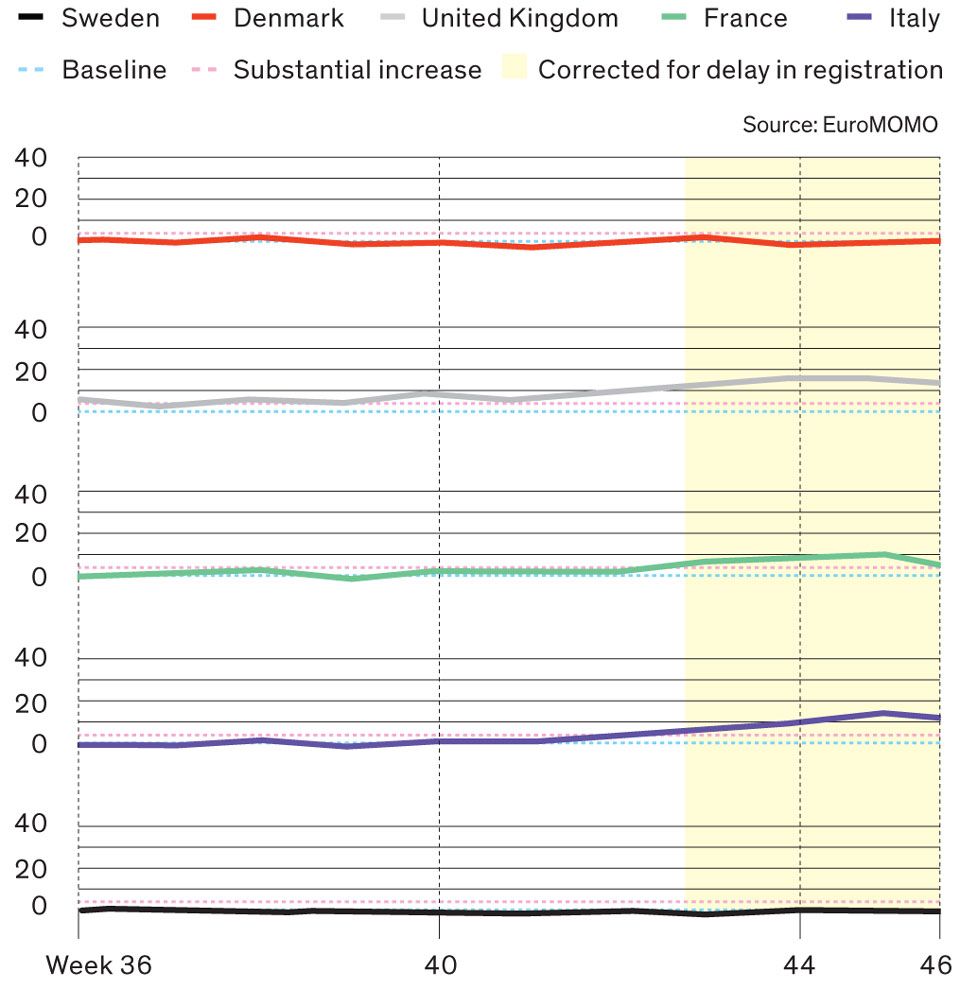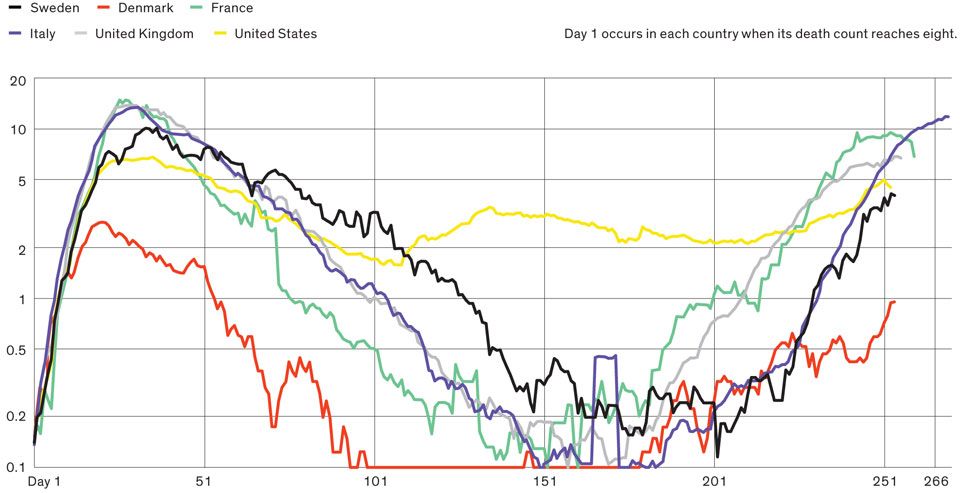Don't be Too Quick to Judge Sweden's Covid-19 Policy
 Photo: Jonas Gratzer/Getty Images
Photo: Jonas Gratzer/Getty Images Passengers pack a Stockholm subway car in early December 2020, when new cases of Covid-19 were peaking
In 2008, I concluded that the next major pandemic would arrive before 2021. The very year after this forecast saw a minor event-involving the H1N1 influenza virus-but the 2019 pandemic obviously qualifies as a major global outbreak.
This was no remarkable feat of forecasting, just a simple recognition that pandemics reappear rather frequently. A regrettable corollary is that we remain repeatedly unprepared for their spread and that we mismanage our responses on truly grand scales. But this does not prevent people from making simplistic judgments.
Sweden's response to the COVID-19 virus is a perfect example of this habit. The response has not been decided by politicians, it has not involved major adjustments, and all key decisions have been left to the state epidemiologist, Anders Tegnell, who has relied on appealing to his compatriots to behave responsibly.
COVID Deaths in SwedenSweden has followed a policy all its own on COVID-19 and received both praise and blame for it. The point was to keep the pandemic within bounds without greatly infringing personal freedom. The country has indeed suffered a higher mortality rate than its peers, but it is still too early for a final accounting.
Z-Scores (Measures of Excess Mortality) for Some European Countries Source: EuroMOMO
Source: EuroMOMO Even in Sweden, his approach has not remained unchallenged, but abroad it has elicited two remarkably divergent criticisms. Some say, They did not resort to any panicky lockdowns, and they are none the worse for it," while others say, They did not lock down anything, and the consequences have been catastrophic." Neither statement is true, but even an interim appraisal, made in November 2020, shows an outcome that is as singular as it is a part of a larger piece.
To begin with, Sweden shut down high schools and universities, but not grade schools and kindergartens; it restricted very large gatherings, allowed restaurants, shops, and services to remain open, while leaving to the individual the responsibility of limiting smaller gatherings. The early consequence of these decisions seemed severe: Excess mortality began to rise steeply in late March, and in April it reached levels far higher than in any of the country's immediate Nordic neighbors. But by midsummer, cumulative mortalities divided by the size of the population were considerably lower in Sweden than in several populous European nations. By the middle of November, cumulative death rates were twice as high in Belgium, 45 percent higher in Spain, 25 percent higher in the United States, United Kingdom, and Italy (the country with extensive restrictive lockdowns) and 12 percent higher in France. On the other hand, the mortality rate in Finland and Norway was only about 10 percent that of Sweden, and Denmark's rate was about 80 percent lower.
There is no doubt that Sweden's numbers were inflated, in part, by the relatively high share in its population of the foreign born (who are more vulnerable to infection)-a quarter of the people are immigrants, and nearly a third have at least one parent born abroad. Similarly, comparisons of excess all-cause mortality (a rate that is better able to capture the actual death toll attributable to the pandemic) show that in October 2020 the Swedish rate was marginally lower than in France, 30 percent lower than in the United States, only half as high as in Spain-but 2.5 times higher than in Finland and five times higher than in Germany.
EuroMOMO, which monitors mortality, shows Swedish deaths rising substantially above normal from the 13th to the 21st week of 2020, returning within normal range by the 27th week, and steadily declining afterward to below the normally expected rate by the 40th week of 2020. By the 45th week, Swedish mortality remained well below the expected level and even below the Norwegian rate.
Meanwhile France, Italy, Spain and Belgium had, once again, high excess mortalities, and only the Finnish mortality was well below the Swedish rate. The final verdict about Sweden's relative success or indefensible failure is still many months in coming.
Obviously, you can use these comparisons to portray Sweden as either a success (vis-a-vis Spain, the U.K., or the United States) or a failure (vis-a-vis Germany or Finland). But we will have to wait until the second wave of the pandemic has fully asserted itself to see how such comparisons will fare.
This article appears in the January 2021 print issue as Sweden's COVID Response."
Daily COVID-19 Deaths per Million Inhabitants Source: Covid19insweden.com
Source: Covid19insweden.com